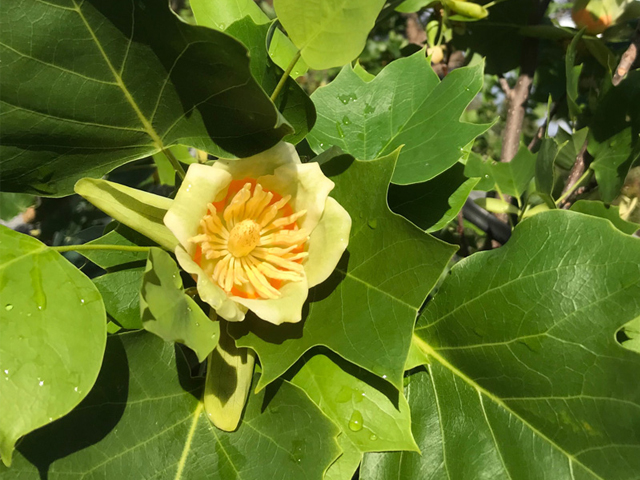TREES FOR SPRING BLOOM
14 Oct 2021
Springtime is a time for new growth and the flush of flowers. For the best seasonal impact, choosing colour, form and duration of flowering right for your landscape project can be tricky. For those looking for the ‘right’ flowering specimen, here are some to consider from Speciality Trees.

Spring offers a time of reconnection to all things green. Weather is generally warmer and the lure of scent and colour works to entice us back outside. It's a lovely time of the year to get excited about growth. Here are some beautiful yet underutilised selections from Speciality Trees that will make you fully appreciate the season.
Cercis

Great for pink spring bloom and dainty form, this striking species has beautiful, broad heart-shaped leaves and transient autumn colour. Often multi-trunked, the branches have a distinctive zigzag growth habit. Pea-like flowers appear tight on bare limbs from late winter to early spring, starting deep red and opening to pink. In summer, long, flat leguminous seedpods develop and can hang onto the tree until winter. For a blossom look different from traditional sources such as ornamental Prunus, Cercis canadensis (pictured), Cercis ‘Forest Pansy’ and Cercis siliquastrum ooze a delicate beauty in spring.
Malus

You can’t talk pink blossom like flowers without mentioning Crab Apple. And there are a number of Malus varieties to consider in this space. All range within the 4 – 7m tall bracket and flower profusely during spring. For shades of pink or red look for Malus yunnanensis ‘Wychwood Ruby’, Malus ioensis ‘Rubra’ and Malus ioensis plena. For a white alternative and a handy substitute for Manchurian Pear (Pyrus ussuriensis) look for Malus tschonoskii (pictured). Unlike the candy coloured blooms of those previously mentioned, tschonoskii flowers are more open, white and with only the slightest hint of pink.
Liriodendron tulipifera

Known as the Tulip tree for its flower shape, this is a beautiful tall tree with large distinctively shaped leaves and smooth texture. In spring it produces striking yellowish-green flowers decorated with flecks of orange. These resemble tulips, are big and solitary and sit in the extreme upper-most branches. Use these trees to suit height and space as they range between 15-20m tall. The fullest is Liriodendron tulipifera (pictured) at 20 x 8m; Liriodendron tulipera ‘aureamarginatum’ is smaller at around 15m and has green leaves with a yellow rim. Choose Liriodendron tulipifera fastigiata for all the bells and whistles in a narrower form suitable for courtyards and walkways.
Melia azedarach

Melia azedarach (pictured) is one of the few deciduous Australian natives! It is certainly the only commercially grown landscaping one. Melia azedarach is fast-growing with a rounded crown and dense leaf covering, making it a good choice for a deciduous shade tree. Glossy new foliage emerges in spring along with clusters of showy, fragrant, lilac flowers – although these appear more white from a distance - followed by hard, yellow to pale orange bead-like fruits which hang on the tree well into autumn after the leaves have fallen. This gives the tree a slightly oriental look. Used extensively as a street tree, it is this combination of fine foliage, berry and v-shaped form that also makes it distinctive as a feature tree.
Speciality Trees are here to assist you to find the right tree for your circumstances. For more information on any of these selections, please contact Speciality Trees via the links below.







